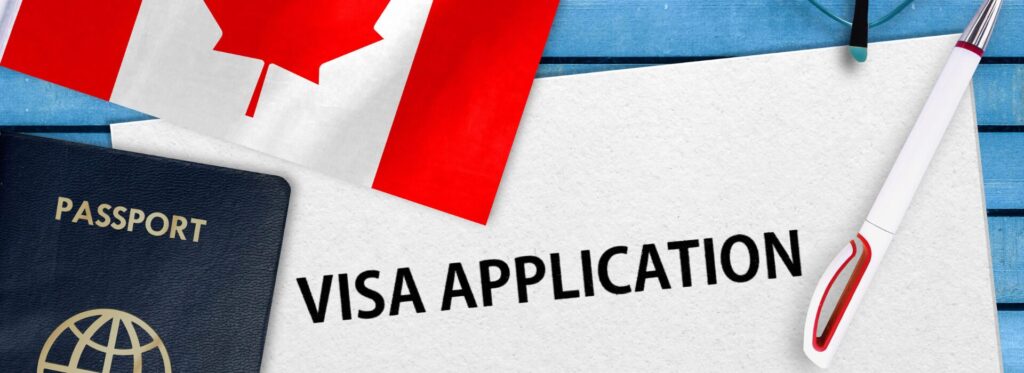Canada has emerged as one of the top destinations for immigrants, international students, and skilled professionals. Whether you’re planning to settle in Canada permanently, pursue higher education, or explore job opportunities, understanding the Canada PR Visa process, migration pathways, and study visa requirements is crucial. In this comprehensive blog, we’ll walk you through everything you need to know about the Canada PR Visa, the migration process to Canada, and the Canada study visa.

Why Choose Canada?
Canada offers a high standard of living, world-class education, and a multicultural society. The country is known for its inclusive immigration policies, strong economy, and excellent healthcare system. From international students to skilled workers and entrepreneurs, Canada welcomes migrants with open arms.
Understanding Canada PR Visa
A Canada PR Visa (Permanent Resident Visa) allows you to live, work, or study anywhere in Canada permanently. It is one of the most popular immigration options for skilled professionals and families seeking long-term settlement in Canada.
Benefits of Canada PR Visa:
- Live and work anywhere in Canada
- Access to social benefits, including healthcare
- Free education for children
- Pathway to Canadian citizenship
- Protection under Canadian law
Eligibility Criteria for Canada PR Visa:
To apply for a Canada PR Visa, you need to meet specific criteria under programs like:
- Express Entry Program
- Provincial Nominee Program (PNP)
- Family Sponsorship
- Canadian Experience Class
- Quebec Skilled Worker Program
Among these, the Express Entry system is the most popular and fastest route to obtain permanent residency in Canada.
Step-by-Step Migration Process to Canada
Migrating to Canada involves several steps, from choosing the right immigration program to preparing documentation and attending interviews. Here’s a breakdown of the migration process to Canada:
Step 1: Determine Your Eligibility
Use Canada’s official online tools to check if you qualify under any of the available immigration programs. Most skilled migrants apply through the Express Entry system, which evaluates candidates based on a Comprehensive Ranking System (CRS) score.
Step 2: Educational Credential Assessment (ECA)
Before applying, you need to get your academic qualifications evaluated through designated organizations like WES (World Education Services) to ensure they meet Canadian standards.
Step 3: Take a Language Proficiency Test
Language skills are critical for immigration. You must take an approved language test like IELTS or CELPIP for English, or TEF for French, and meet the minimum requirements.
Step 4: Create Your Express Entry Profile
Submit an online profile to the Express Entry pool. Your profile will be ranked based on the CRS score, which includes age, education, work experience, and language ability.
Step 5: Receive an Invitation to Apply (ITA)
If your profile meets the cut-off CRS score in a particular draw, you will receive an Invitation to Apply (ITA) for PR.
Step 6: Submit Your PR Application
You have 60 days to submit a complete PR application along with documents such as proof of funds, police clearance, and medical certificates.
Step 7: Get Confirmation of Permanent Residence (COPR)
Once your application is approved, you will receive your COPR and can officially migrate to Canada.
Canada Study Visa: A Gateway to Permanent Residency
Many international students opt for a Canada study visa not only for quality education but also to pave the way toward permanent residency. Studying in Canada provides global exposure, work opportunities, and a direct path to PR through the Post-Graduation Work Permit Program (PGWPP).
What is a Canada Study Visa?
A Canada study visa, often referred to as a study permit, allows international students to live and study in Canada for the duration of their program.
Eligibility Requirements for Canada Study Visa:
- An acceptance letter from a Designated Learning Institution (DLI)
- Proof of sufficient funds to cover tuition fees and living expenses
- No criminal record
- Medical examination (if required)
- Statement of purpose outlining your study plans in Canada
Application Process for Canada Study Visa:
- Secure Admission: Apply and get accepted by a recognized DLI in Canada.
- Gather Documents: Collect documents such as passport, acceptance letter, proof of funds, and medical reports.
- Apply Online: Submit your study permit application online via the IRCC (Immigration, Refugees and Citizenship Canada) website.
- Biometrics Appointment: Attend a biometrics appointment at a local Visa Application Centre.
- Visa Approval: Once approved, you’ll receive a Port of Entry (POE) Letter of Introduction and can travel to Canada.
Study to PR Pathway in Canada
After completing your studies in Canada, you can transition to PR through several programs:
- Post-Graduation Work Permit (PGWP): Work in Canada for up to 3 years.
- Canadian Experience Class (CEC): Apply for PR under Express Entry after gaining work experience.
- Provincial Nominee Programs (PNPs): Get nominated by provinces based on education and job offer.
- Atlantic Immigration Program: A popular route for graduates in Atlantic provinces.
Popular Courses That Lead to PR in Canada
To maximize your chances of securing PR, choose programs that are in demand in Canada:
- Information Technology and Computer Science
- Healthcare and Nursing
- Engineering and Technology
- Business and Management
- Agriculture and Environmental Sciences
- Hospitality and Tourism
Financial Requirements for Canada PR and Study Visa
For PR:
You need to show proof of settlement funds unless you are applying under CEC or have a valid job offer. The required amount varies depending on the size of your family.
For Study Visa:
You need to prove you can afford:
- Tuition fees (average CAD 15,000 – CAD 30,000 per year)
- Living expenses (CAD 10,000 annually for a student)
- Return transportation
Best Provinces in Canada for New Immigrants
Certain provinces offer better opportunities for newcomers, both students and skilled migrants:
- Ontario – Strong job market and excellent universities
- British Columbia – Great weather, tech industry, and scenic beauty
- Alberta – Affordable living and high employment rates
- Nova Scotia – Friendly immigration policies and good work-life balance
- Manitoba – Strong PNP program and growing industries
Common Mistakes to Avoid
- Submitting incomplete applications
- Ignoring language test preparation
- Not checking the validity of documents
- Choosing unapproved educational institutions
- Missing deadlines after receiving ITA
Always seek guidance from authorized immigration consultants or lawyers to avoid errors that could delay your application.
Final Thoughts
Migrating to Canada is a life-changing decision. Whether you’re applying for a Canada PR Visa, exploring the migration process to Canada, or planning to study through a Canada study visa, it’s essential to understand the requirements, follow the right steps, and stay informed throughout the process.
Canada offers tremendous opportunities to build a successful future, and with the right guidance and preparation, your dream of living in one of the world’s most welcoming countries can become a reality.
Need help with your Canada PR or Study Visa Application?
Get expert guidance from trusted Canada immigration consultants and make your journey smooth and hassle-free. Start your application today!




